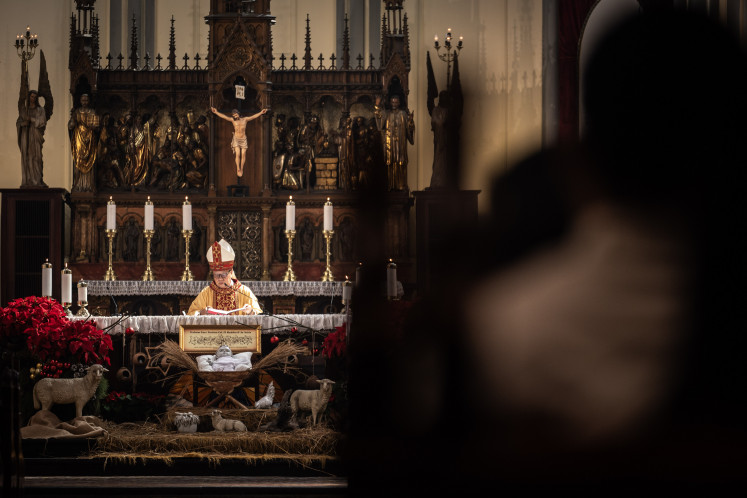Popular Reads
Top Results
Can't find what you're looking for?
View all search resultsPopular Reads
Top Results
Can't find what you're looking for?
View all search resultsDiscovered remains may be ancestors to Balinese
The human remains discovered inside a sarcophagus that was excavated recently in Keramas village, Gianyar, may be the ancestors of today’s Balinese, chief of the Bali Archeology Office Wayan Suantika said
Change text size
Gift Premium Articles
to Anyone
The human remains discovered inside a sarcophagus that was excavated recently in Keramas village, Gianyar, may be the ancestors of today’s Balinese, chief of the Bali Archeology Office Wayan Suantika said.
Suantika said the Keramas sarcophagus showed similarities with a number of other sarcophaguses found in Gianyar, meaning that the remains may have been from a group of “villagers” belonging to the Mongoloid race who settled on the island.
“Earlier findings have shown that people then were already living in small groups of villages and that they were Mongoloids, the race with which most Indonesians are associated today,” Suantika said on Monday.
“So if the most recent discovery is consistent with earlier findings then yes, it is possible they may have been the ancestors of the Balinese.”
Last week, construction workers found a sarcophagus containing human bones when digging up a section of Jalan Raya Pura Selukat in Keramas, Blahbatuh, Gianyar.
It is the 12th sarcophagus found in the Gianyar regency, and the 80th in Bali.
Suantika, who led the field operation to check on the sarcophagus, said the interesting thing was that the sarcophaguses found in Gianyar tended to be found within a relatively small area and shared many similarities.
He estimated that the remains may be dated as early as 500 B.C., long before Javanese kingdoms ruled most of Indonesia’s waters.
“My estimation is based on the similarities it shared with the other discoveries, such as its shape and size,” Suantika said.
“And that further supports the likelihood that the most recent finding is closely related to the previous one.”
He said more discoveries of the same may denounce theories that argued Balinese ancestors came from India.
“With the Keramas sarcophagus, this theory has become even less convincing in terms of race,” he said.
The sarcophagus itself was shaped like a vessel and made of a 1.5 meter long slab of rock, with a circular lid 1 meter in diameter.
It was buried 2.5 meter beneath the ground.
He said the sarcophagus came from the Megalithic era, which predates the Iron Age. Several
Megalithic structures can still be found on the island of Nias (where a cultural tradition requires adult males to jump over a tall slab of rock) and several areas in Kalimantan.
Suantika warned that nothing was conclusive, saying that there was more research to be done on the sarcophagus.
Meanwhile, the sarcophagus will be staying where it was found, Suantika said.
“We don’t want to risk taking it back to Denpasar because in the past, we have had occasions where the locals believe that moving such an artifact would bring disaster to the village,” he said, adding that his office will continue making trips to the site to study the sarcophagus further.










